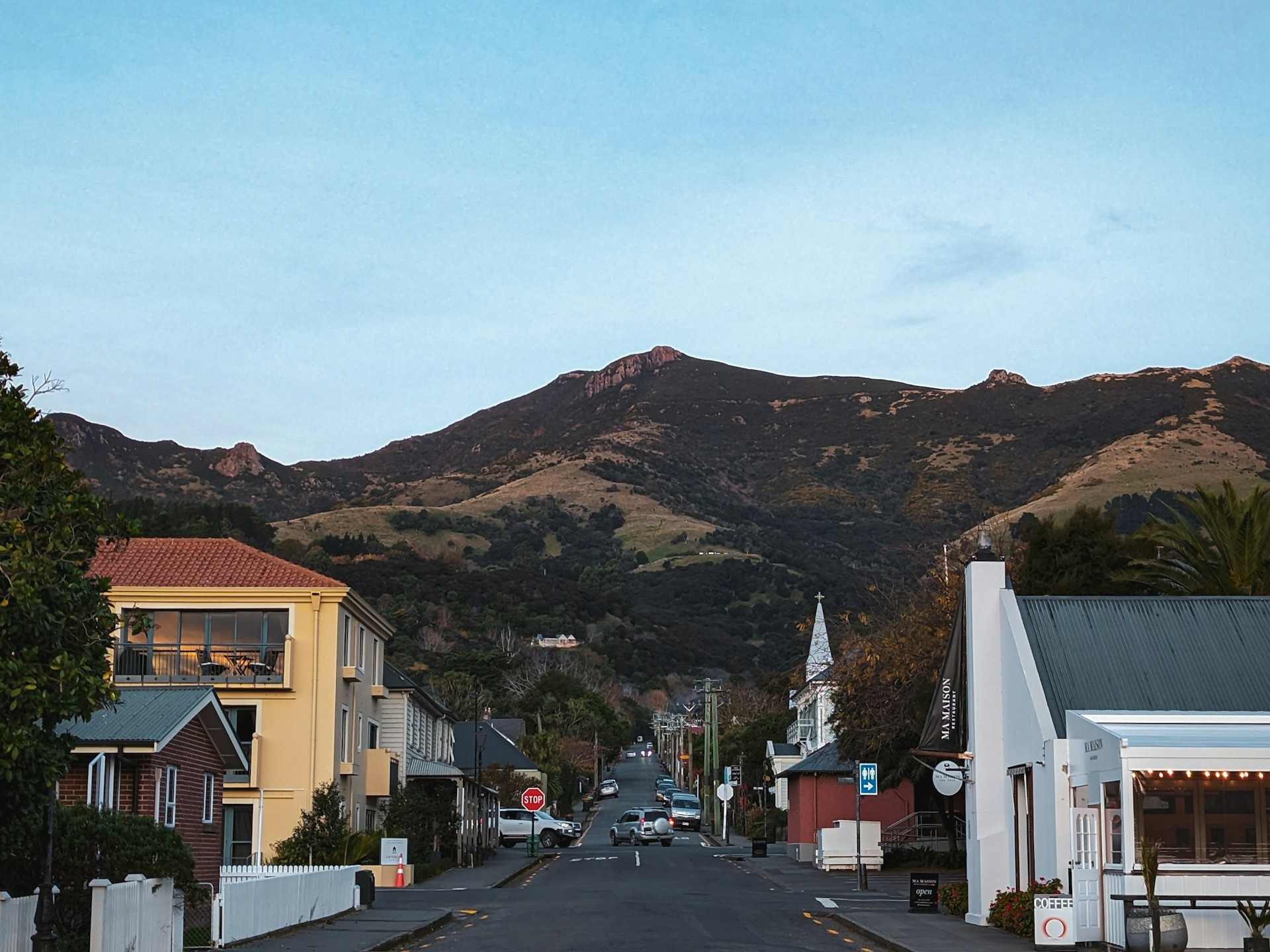Dramatic mountains, winding coastal roads and charming towns make every trip scenic. The best part of New Zealand isn’t just as a destination itself – it’s a journey through it. But before you set off, the first big question is: how will you get around?
Here’s your guide to travelling by car, bus, train or plane in Aotearoa, with practical tips and local transport options.
🚗 Travelling by Car:
Your freedom on four wheels. If you want full control of your itinerary, driving is hard to beat. New Zealand’s roads are generally well-maintained, connecting even remote areas – though rural roads can be narrow, winding and occasionally challenging in winter.
If you’re staying longer than a month, consider buying a used car or campervan – you can resell it before leaving.
Best for: Explorers, photographers, couples or anyone who wants the freedom to go off the beaten track.
Pros:
- Travel on your own schedule – stop for photos, detours and hidden gems.
- Access to remote destinations, hiking trails, and small towns.
- Easy to rent cars or campervans in every major city and airport.
Cons:
- Petrol is expensive and ferry crossings between islands can add significant cost.
- Left-side driving might take adjustment if you’re from overseas.
- City parking can be limited and pricey.
🚌 Travelling by Bus
Budget-friendly and connected. Buses are New Zealand’s backbone for budget travel.
Nationwide:
- InterCity runs a bookable bus service nationwide, connecting towns from Cape Reinga to Invercargill, while smaller van and bus shuttles serve regional and popular tourist areas.
- Grab an InterCity FlexiPass for multiple trips. It lets you prepay for travel hours and use them across different routes. These are perfect for multi-destination itineraries.
City specific transport cards:
- Auckland: The AT HOP card works across buses, trains and ferries – including routes across the Waitematā Harbour.
- Wellington: The Snapper card covers buses, trains, and ferries throughout the capital.
- Christchurch: Use the Metrocard for discounted bus fares across the city.
Pros:
- Affordable and convenient, especially if booked early.
- No stress about directions, fuel, or parking.
- Relax and watch New Zealand’s scenery unfold from your seat.
Cons:
- Fixed schedules limit flexibility.
- Remote areas and national parks may require extra planning.
- Travel times can be longer due to stops.
🚆 Travelling by Train
The scenic route. New Zealand’s trains are small in number but big in experience. KiwiRail operates three iconic scenic routes:
- Northern Explorer: Auckland to Wellington, passing volcanoes, farmland, and gorges.
- Coastal Pacific: Picton to Christchurch, following vineyards and dramatic coastline.
- TranzAlpine: Christchurch to Greymouth, cutting through the Southern Alps and often called one of the world’s most beautiful train journeys.
Pros:
- Spacious, relaxing, and designed for sightseeing.
- Panoramic windows and open-air viewing cars.
- Onboard café service adds comfort for longer journeys.
Cons:
- Limited routes and timetables.
- More expensive than bus travel.
- Additional transport may be needed to reach destinations beyond train stations.
- You will need to book early, especially for the TranzAlpine, as it fills up during summer and holiday periods.
✈️ Travelling by Plane
Fast and efficient for longer distances – especially between islands or when time is short, flying is often the smartest option.
Domestic airlines include:
- Air New Zealand – The main national carrier, with extensive routes between cities and regional towns. Known for reliability and good service.
- Jetstar – Budget airline offering cheap flights between major centres like Auckland, Wellington, Christchurch, and Queenstown.
- Air Chathams – Connects smaller regional destinations such as Whakatāne, Kāpiti, Whanganui, and the Chatham Islands.
Pros:
- Fastest way to cover long distances or skip ferry crossings.
- Regular flights between all major cities.
- Often competitive fares if booked in advance.
Cons:
- Costs more than bus or ferry travel.
- Strict baggage limits on cheaper fares.
- Airport transfers can add extra time and cost.
Making the right choice
- Short-term or budget travellers: Buses are simple, cheap, and reliable.
- Adventure seekers: A car lets you explore the hidden corners of New Zealand at your own pace.
- Slow travel enthusiasts: Trains offer a cinematic journey through New Zealand’s landscapes.
Many travellers combine modes: drive a car on the South Island, take buses or trains in the North and use the ferry to connect both islands. This approach gives flexibility, comfort and the chance to experience NZ like a local.
Transport Summary
| Region / Mode | Best Transport Option | Notes |
|---|---|---|
| Auckland | AT HOP card | Tap-and-go across buses, trains, and ferries — ideal for exploring the city and harbour. |
| Wellington | Snapper card | Works on buses, trains, and ferries throughout the capital region. |
| Christchurch | Metrocard | Discounted fares on city bus routes; simple and affordable local travel. |
| Nationwide (Bus) | InterCity | Affordable long-distance bus network covering nearly every town in NZ. |
| North & South Islands (Train) | KiwiRail | Scenic routes including Northern Explorer, Coastal Pacific, and TranzAlpine. |
| Nationwide (Air) | Air New Zealand | Main national airline — extensive routes between all major cities and regional centres. |
| Main Cities (Air) | Jetstar | Budget domestic airline for fast, low-cost flights between major hubs. |
| Regional Towns & Islands (Air) | Air Chathams | Connects smaller regional airports and the Chatham Islands with the mainland. |
